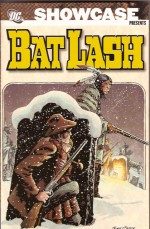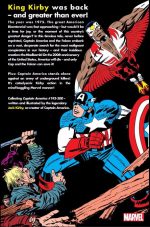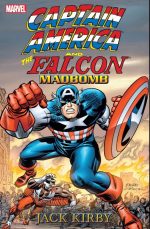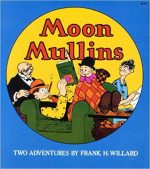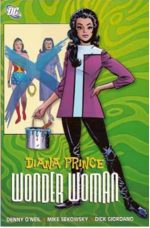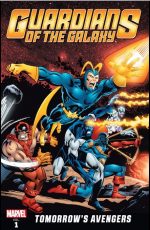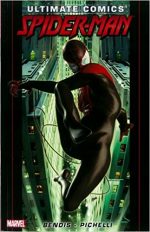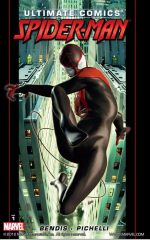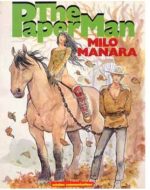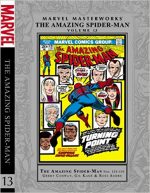
By Gerry Conway, Gil Kane, Ross Andru, John Romita & various (Marvel)
ISBN: 978-0785150367 (HB)
In these days of an infinitude of fan-sites, publicity cycles and gleeful spoiler-mongers, it takes a lot to keep a shock-ending from the readership, but back in 1973 comics consumers had only word-of-mouth and the story itself. Thus, the lead story in this particular compilation totally staggered everybody when it was released, and within mere months of that, the on-fire creators would also introduce an antihero to shake up the entire comics industry…
Amazing Spider-Man was always a comicbook that matured with – or perhaps just slightly ahead – of its fan-base, and this staggering 13th full-colour compilation of chronologically congregated Arachnoid Adventures sees the World’s Most Misunderstood Hero endure a second and life-altering failure: one that forever altered the tone and timbre of his existence even while continuing the steady climb to becoming a global household name…
After a rather nervous nativity, the wallcrawler became a certified sensation with kids of all ages. Before too long the quirky, charming, thrillingly action-packed comics soap-opera would become the model for an entire generation of younger heroes impatiently elbowing aside the staid, (relatively) old thirty-something mystery-men of previous publications and hallowed tradition.
Smart-but-alienated Peter Parker was bitten by a radioactive spider during a school trip. Discovering strange superhuman abilities which he augmented with his own natural chemistry, physics and engineering genius, the kid did what any lonely, geeky nerd would do with such newfound prowess: he tried to cash in for girls, fame and money.
Making a costume to hide his identity in case he made a fool of himself, Parker became a minor media celebrity – and a criminally self-important one. To his eternal regret, when a thief fled past him one night he didn’t lift a finger to stop him, only to find when he returned home that his guardian uncle Ben Parker had been murdered.
Crazed and vengeful, Peter hunted the assailant who’d made his beloved Aunt May a widow and killed the only father he had ever known, discovering, to his horror, that it was the self-same felon he had neglected to stop. His irresponsibility had resulted in the death of the man who raised him, and the traumatised boy swore to forevermore use his powers to help others…
Since that night, the Wondrous Wallcrawler tirelessly battled miscreants, monsters and madmen, with a fickle, ungrateful public usually baying for his blood even as he perpetually saves them…
Re-presenting Amazing Spider-Man #121-131 – originally released between June 1973 and April 1974 – the culmination of a decade of suspense and intrigue began on ‘The Night Gwen Stacy Died’ (by Gerry Conway, Gil Kane, John Romita & Tony Mortellaro), the initial instalment of a two-part tale which gobsmacked fans as Peter’s greatest efforts proved insufficient to save his intended from the insane rage of a resurgent Green Goblin.
Ultimate nemesis Norman Osborn had recovered the lost memory of his evil alter ego after his son Harry fell back into drug abuse and, once restored to his malign potency, kidnapped Spider-Man’s girlfriend to force a final confrontation…
The tragic episode leads inexorably to ‘The Goblin’s Last Stand!’ one issue later and a grim and gritty new direction…
With Spider-Man accused of murdering Osborn and erroneously implicated in Gwen’s death, Daily Bugle publisher J. Jonah Jameson takes advantage of a new kind of metahuman champion in #123; engaging emergent Hero for Hire Luke Cage to bring the webspinner to justice in‘…Just a Man Called Cage!’
However, the clash only proves that the antagonists’ lives are more tragically similar than different and Marvel’s pre-eminent African American adventurer recuses from the case in a most distinctive manner…
As previously stated elsewhere, at this time horror was on the rise and the trend permeated all aspects of Marvel continuity. In #124, Jameson’s astronaut son John was revealed to have picked up a strange gem during a clandestine moonwalk which later transformed him into a lupine beast bearing ‘The Mark of the Man-Wolf!’
Deranged and deadly, the hairy horror stalks his own fiancée Kristine Saunders as well as his scandal-obsessed father, with a still-traumatised fighting-mad Spider-Man reacting in a far more brutal manner than ever before…
The conclusion marked the introduction of the next star penciller to the strip as Ross Andru joined Conway and Romita to delineate the end of the Man-Wolf saga in ‘Wolfhunt!’, offering a particularly grisly cure for the astrally-altered astronaut…
In #126 a new subplot bloomed as a marketing firm hired the astounded and unbelieving arachnid to build a “Spider-Mobile†(thanks in cold, hard fact to a budding toy-merchandising deal Marvel was currently negotiating) whilst an old and extremely inept enemy returned when ‘The Kangaroo Bounces Back!’ (illustrated by Andru and inked by Jim Mooney).
Short of cash and desperate, Spidey ropes in best frenemy Johnny (Human Torch) Storm to help assemble the anticipated automobile, but is totally unprepared for his Australian attacker since the Kangaroo has had a rapid and ultimately unwelcome power upgrade from a rogue and extremely deranged doctor named Jonas Harrow…
And in the apartment Peter shares with Harry Osborn, the son of the Green Goblin finally succumbs to the mental illness that has been sucking him down since the death of dear old Dad…
Peter’s great friend and good time girl Mary Jane Watson comes under the spotlight in #127 as ‘The Dark Wings of Death!’ (inked by Frank Giacoia & Dave Hunt) finds her targeted by a strangely familiar monster who believes she witnessed his last kill. The mystery concludes in ‘The Vulture Hangs High!’ wherein an incredible truth about the avian atrocity is revealed…
Portents of future trouble manifest as Parker’s biology tutor Professor Miles Warren warns that the scholarship student’s grades are slipping and his position is far from secure…
Conway, Andru, Giacoia & Hunt then crafted a true landmark in comics history in Amazing Spider-Man #129 with ‘The Punisher Strikes Twice!’ which introduced not only the renegade gunslinger but also nefarious manic mastermind The Jackal.
Although one of the industry’s biggest hits from the late 1980s onwards, compulsive vengeance-taker Frank Castle was always an unlikely and uncomfortable star for comicbooks. His methods are always excessively violent and usually permanent. It’s intriguing to note that unlike most heroes who debuted as villains (Black Widow or Wolverine come to mind) the Punisher actually became more immoral, anti-social and murderous, not less: the buying public simply shifted its communal perspective; The Punisher never toned down or cleaned up his act…
He was created by Conway, Romita Sr. and Andru; an understandably toned down and muted response to popular prose anti-heroes like Don Pendleton’s Mack Bolan: the Executioner: the cutting edge of a bloody tide of fictive Viet Nam vets who all turned their training and talents to wiping out organised crime in the early 1970s.
In this short, sharp shocker the man with the skull logo was duped by his manipulative partner into hunting Spider-Man. Still a suspect in the death of Norman Osborn, the hero was easy to frame for the murder of the Punisher’s personal gunmaker…
A long-running mystery over Aunt May’s connection to Doctor Otto Octavius is at last addressed in #130 as ‘Betrayed!’ finds up-&-coming ganglord Hammerhead prodded and provoked by the Jackal just as arch-rival Doctor Octopus resurfaces.
Distracted by the now-completed Spider-Mobile, the webslinger is slow to react until he finally discovers why his Aunt May Parker is so important to the villain, but by then she’s in the process of becoming Mrs. Otto Octavius…
Spiderman is just about to bust up the wedding in ‘My Uncle… My Enemy?’ when Hammerhead beats him to it. As the three-way battle escalates the truth comes out. May has inexplicably inherited a desolate Canadian island which just happens to be teeming with uranium deposits and its own Fast Breeder Atomic Reactor which both Ock and Hammerhead want to secure as the means to becoming an independent nuclear power…
When the rivals furiously clash it is all Peter can do to get May out before the entire place becomes an atomic inferno…
Supplemented by a series of Annual and compilation covers, House ads, original design sketches, and unpublished and lost pages of Kane and Romita artwork, this book also includes a fascinating Introduction ‘Turning Point’ – by original author Gerry Conway – describing the thinking behind the groundbreaking storyline, offering context and revealing who was originally slated to bite the bullet.
This action-packed collection comprises one of the most momentous periods in Spider-Man’s astounding life and is one every Fights ‘n’ Tights fanatic should see…
© 1973, 1974, 2011 Marvel Characters, Inc. All rights reserved.


